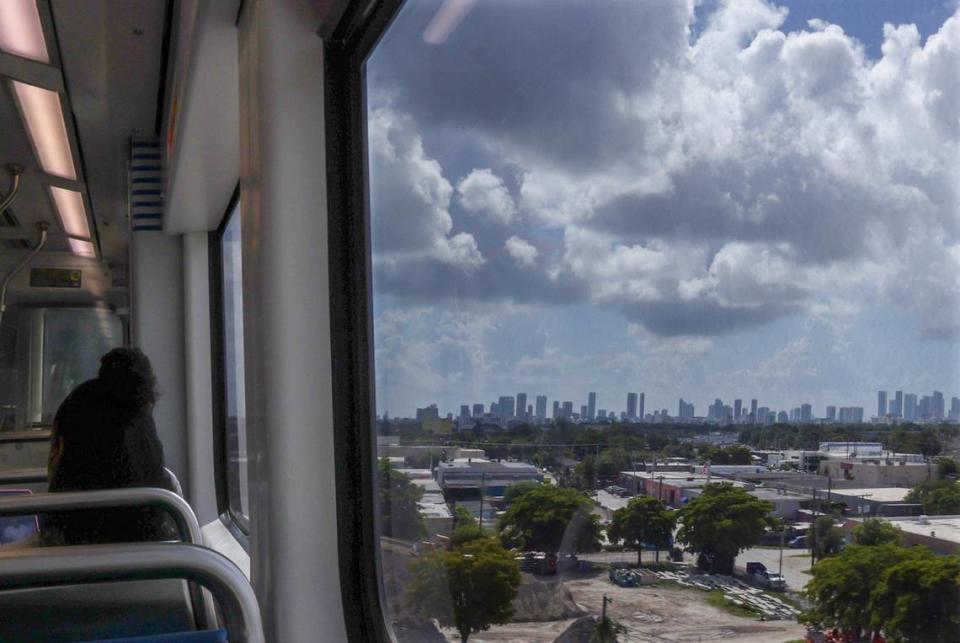Should Miami-Dade expand its transit system? You can answer on the August ballot
Lis Güegüense does not have a car. Instead, she relies on Miami-Dade’s network of trains and buses to get around. When she was in college, that meant an hour-and-a-half commute each way.
Now, Güegüense, 35, works from home, but she still uses public transit for almost everything. On Wednesday morning, she was riding the Metrorail from Miami International Airport back home to Coconut Grove after taking her parents to the airport.
A question on the Aug. 20 county primary ballot will ask voters whether they support expanding rapid mass transit in Miami-Dade County. The measure, a non-binding straw poll sponsored by Miami-Dade County Commission Chairman Oliver Gilbert, asks voters if they think the county should expand its Metrorail, passenger rail and Metromover services, a simple yes or no answer to a complex issue.
Güegüense said she supports expanding public transit in Miami. And Gilbert expects much of Miami-Dade County to feel the same way. He told the Miami Herald he thinks the measure will pass but said that even if it doesn’t, he will continue to push to expand Miami-Dade’s transit network. Gilbert said his goal is for Miami-Dade residents to be able to get anywhere in the county using rapid transit.
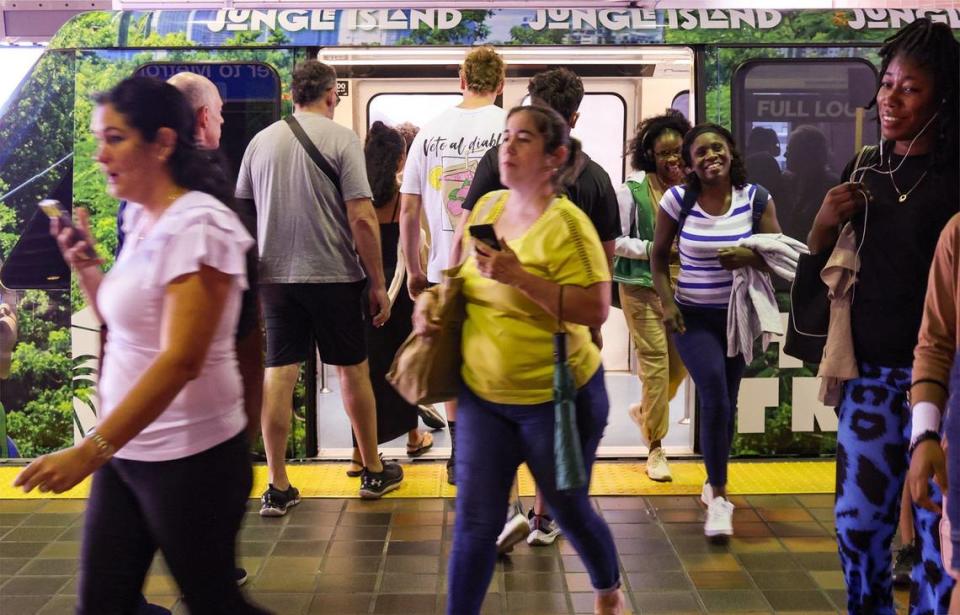
Right now, Miami-Dade County has two Metrorail lines that start in Dadeland, with one running to the area around Hialeah and the other running to Miami International Airport. Three Metromover loops offer free service in Miami’s Omni, Brickell and downtown areas, and Tri-Rail commuter trains transport passengers through Palm Beach, Broward and Miami-Dade counties.
Miami-Dade has taken steps to expand its public transit system, including through the 2016 SMART Plan that identified transit solutions for major corridors throughout the county. So far, the only portion of that plan currently under construction is the expansion of bus infrastructure along the South Dade TransitWay, which runs between Dadeland and Florida City.
READ MORE: Is the SMART Plan for Miami-Dade transit dead? You asked, we answered
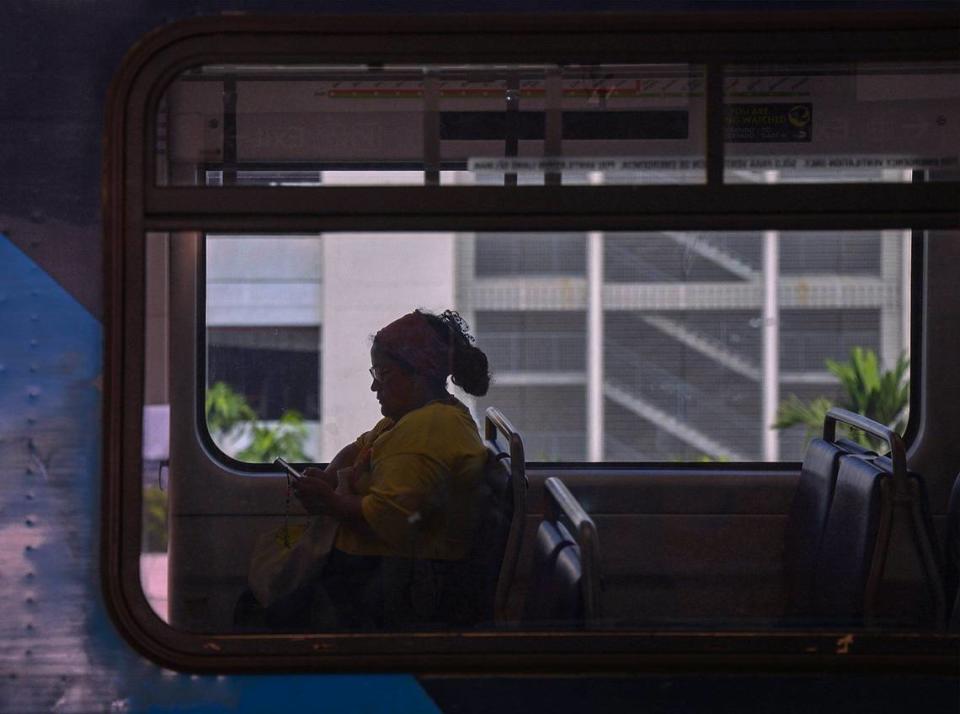
Gilbert said he wants the ballot question to engage voters directly and spark conversation about future plans to expand transit.
“Everyone knows it’s a good idea,” Gilbert said. “You don’t see world-class cities without rapid mass transit.”
Güegüense, who administers environmental grants for a nonprofit, said she doesn’t drive because she wants to do her part to mitigate climate change. And it doesn’t hurt that taking public transit saves her money she’d otherwise have to spend on gas, parking and insurance, she said.
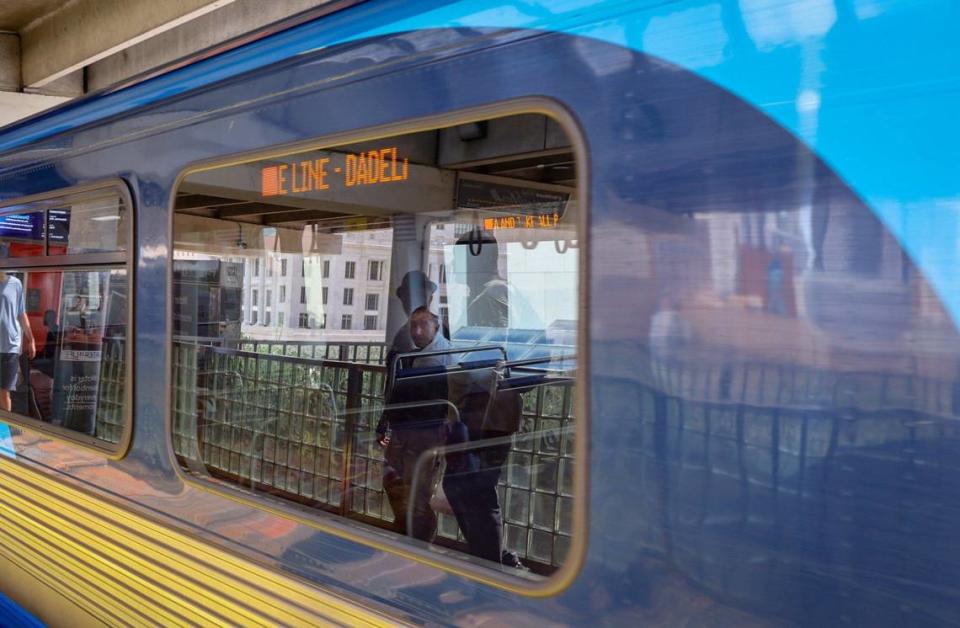
Especially for lower-income Miami-Dade residents, the public transit system can be a lifeline. Güegüense said when she was young, her family could only afford one car, which her father used for work. That meant she and her mother used public transit to go almost everywhere. She said she thinks it’s possible to get anywhere using transit, but it does require “patience.”
Residents aren’t the only ones who say they use public transit to save money. Nicole Dyer and Jesús Segura, tourists from Costa Rica who were staying in downtown Miami this week, said they planned to use the Metrorail and downtown trollies to avoid steep Uber costs. On Wednesday morning, they took public transit to go to Dolphin Mall.
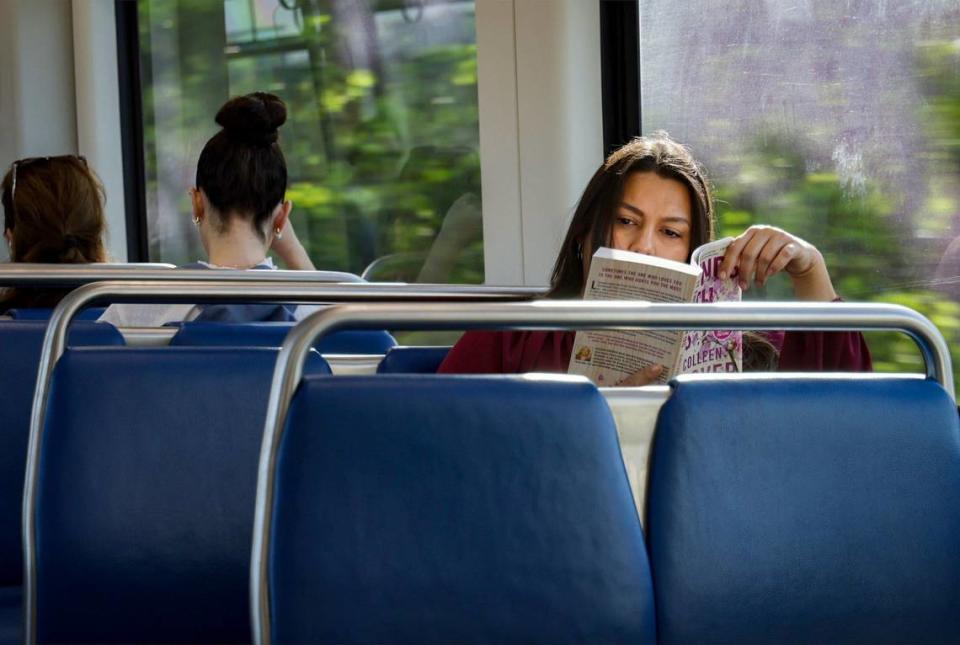
Others say the county’s transit system offers an alternative to commuting in rush-hour traffic. Elizabeth Prats said taking public transit to work has saved her money on gas and allowed her to spend her commute reading and catching up on emails. Prats, who uses the Metrorail to get to her office in downtown Miami, was reading Colleen Hoover’s popular romance novel, “It Ends With Us,” on the way to work Wednesday morning.
For Joaquin Rodriguez, an IT consultant who works in Brickell, it takes about as long to commute to the office by Metrorail as it does to drive. But by taking the train, he avoids sitting in traffic, which he said helps him feel “alert and refreshed” by the time he gets to the office.
Mark Merwitzer, who works for the advocacy group Transit Alliance Miami, said traffic is consistently a top local concern for voters. He believes transit is an “absolute solution” to Miami’s congestion, which he said is among the worst in the U.S.
Like Gilbert, Merwitzer said he expects the ballot measure to pass.
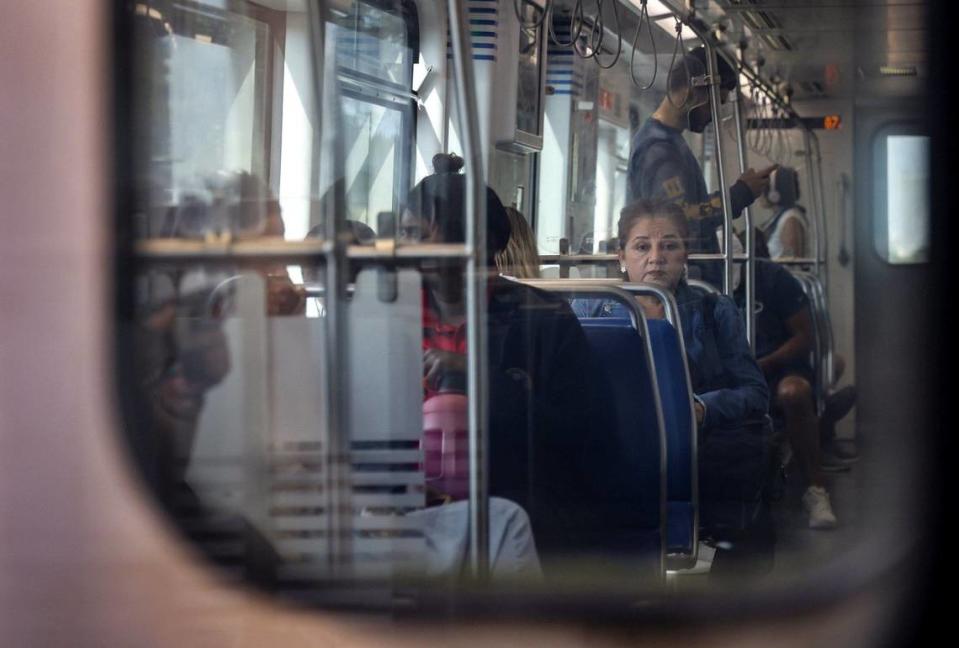
The county’s growing population has exacerbated congestion, but not everyone thinks expanding public transit is the solution. Yvonne Bayona, who lives in Miami’s Shenandoah neighborhood, said she thinks the county’s infrastructure has not kept up with its growing population, making traffic almost unbearable.
Bayona, who does not use public transit herself, said the county should address the problem by investing in infrastructure like roads and expressways, not its public transit. In fact, she said she plans to vote against the measure next month, saying she has seen little improvement in Miami’s public transit system over the years.
There’s also been opposition to expanding transit in Miami Beach, said Matthew Gultanoff, the founder of Better Streets Miami Beach. Earlier this year, the Miami Beach City Commission voted against expanding the Metromover to Miami Beach. Commissioners there cited concerns about free transit bringing crime and homelessness to the city.
